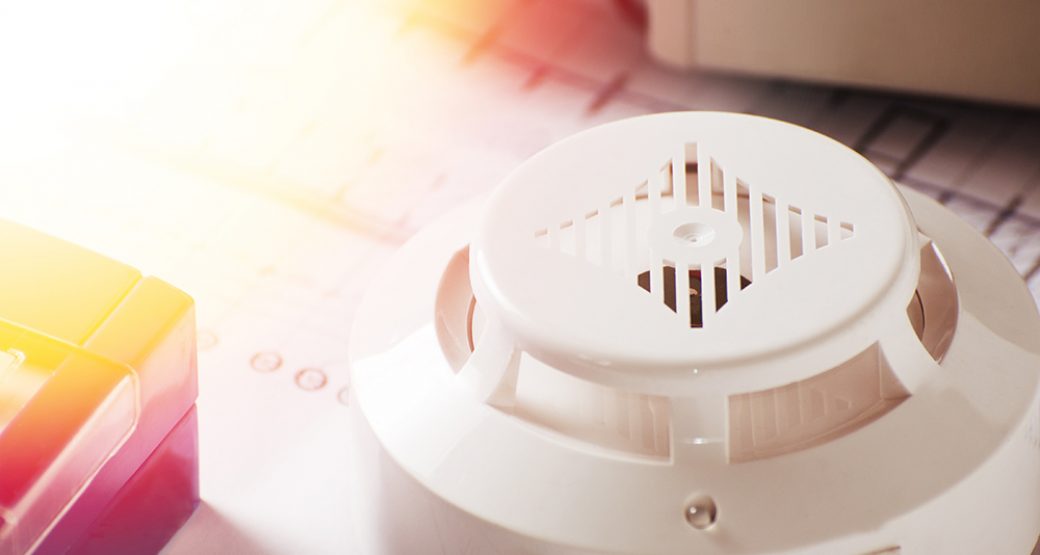From fires to an unexpected carbon monoxide buildup, disasters can happen at any time and in any place, which is why fire and evacuation systems are so vital. When these types of emergencies happen, injuries and even loss of life can occur. The National Fire Protection Association (NFPA) compiled data from around the nation and found that between 2011 and 2015, fires were responsible for 12,300 civilian injuries and 2,510 civilian deaths.
Carbon monoxide also poses a deadly risk. The Centers for Disease Control found that every year, over 400 Americans die from unintentional carbon monoxide poisoning, while over 4,000 become hospitalized after exposure. The fact is that fire and evacuation systems installed in homes and offices can help lower these numbers significantly.
With the right planning and proper preparation, you can prevent yourself, your family, or your employees and co-workers from becoming victims of these types of disasters. Since September is National Preparedness Month, that makes it an excellent time to learn about the unique danger carbon monoxide poses, as well as how to properly install smoke and carbon monoxide detectors and create evacuation plans.
The Keys to Fire and Evacuation Systems
Installing Smoke Detectors
Most people know that installing smoke detectors is a key part of all fire and evacuation systems, but all too often, people fail to place them in proper locations or forget to maintain them. If installed and cared for properly, these safety devices are your first line of defense when an emergency such as fire strikes at work or at home.
The NFPA recommends that homeowners install smoke detectors on every floor of a residence. They should also be installed in each bedroom, as well as just outside of sleeping areas and in hallways throughout the home. A good rule of thumb in terms of distance is that smoke detectors should be installed every 30 feet. Unlike carbon monoxide detectors, smoke detectors should be installed on the ceiling to function in an optimum manner.
For commercial buildings, guidance regarding smoke detectors gets a bit trickier. Because commercial buildings range in size and function, professional guidance and planning are needed when installing smoke detectors to ensure that you stay within all local safety requirements. Properties with multiple smoke detectors need to have them linked together into a central control panel that tells if a detector has been triggered and where. It’s also essential for the system to be monitored so the fire department can be alerted and arrive more quickly should a fire break out.
Smoke detectors (and all detection devices) should be tested monthly to ensure that they’re working perfectly. They should be dusted or vacuumed regularly and replaced every 8 to 10 years.
Installing Carbon Monoxide Detectors
When it comes to fire and evacuation systems, fire is often the first and only thing that comes to people’s minds. Carbon monoxide can be an equally deadly threat, however — especially since it’s a colorless, odorless gas. People often don’t realize a carbon monoxide buildup is happening until they start experiencing symptoms such as dizziness, nausea, confusion, or loss of consciousness. This typically happens when people use camp stoves, generators, and other open-flame devices or engines indoors or in an area where the fumes can collect. First responders see lots of carbon monoxide emergencies during winter storms when the electricity goes out and people use alternate means to keep warm.
The sneaky nature of carbon monoxide is what makes installing carbon monoxide detectors so important in every home and office building. Carbon monoxide behaves differently than smoke, so carbon monoxide detectors must be installed according to different rules than smoke detectors.
For homes, a carbon monoxide detector should be placed on each level of the residence. Good places to install them include in the kitchen, outside of bedrooms, in living and dining areas, and in the garage (as car exhaust can cause a carbon monoxide buildup). If you have a gas furnace or gas dryer, you should install carbon monoxide detectors in those areas, as well.
Installing carbon monoxide detectors in commercial buildings follows similar rules in terms of locating a detector on every habitable level, as well as in every HVAC zone of a building. You should also place a carbon monoxide detector in any room where a permanently-installed fuel-burning appliance is located. Because carbon monoxide mixes with the air and lurks low, detectors should be installed at around knee-height to be effective. Keeping them free of dust will ensure that they work effectively, and tying them in with your residential or commercial security system means that they’ll be monitored in case of an emergency.
Fire Safety Tips
Although setting up fire and evacuation systems in residential and commercial buildings can help save lives and assets, the best way to keep people and valuables safe from disasters is to prevent those disasters in the first place. Here are a few fire safety tips to consider as you give your living and work space a safety once-over.
Keep unsafe materials out of the hands of children. This includes items like matches and lighters. You may think a child isn’t old enough to know how these things work, but kids are smarter and more resourceful than you’d imagine! Store these items up high — out of reach and out of sight.
Use flashlights when the power goes out. As tempting as it may be to bathe your home in the warm glow of candles during a power outage, resist doing this. It only takes one split-second accident — a child pulling on a tablecloth or a cat making an ill-executed jump from the top of the fridge to the kitchen counter — to cause injuries or a house fire.
Keep heating sources in good working order. From furnaces to fireplaces, make sure all heat-generating devices are maintained regularly and used properly.
Check out the electrical wiring. Among the fire safety tips given by experts are warnings about faulty electrical wiring. According to the U.S. Consumer Product and Safety Commission (CPSC), 5,300 fires each year are caused by faulty electrical receptacles. Because of this, it’s a good idea to always have a professional check out and install wiring in your home or business.
Clean and use appliances properly. Many fires are caused by home appliances that have existing problems or are being used improperly. Make sure to properly clean all appliances (including stoves, dryer vents, etc.) and keep them clear of anything that might obstruct airflow or come into contact with heating elements and cause a fire.
How to Make a Fire Escape Plan
Simply installing fire detectors isn’t enough to be fully prepared. If a fire breaks out at your home or at work, everyone in the structure needs to know the fire escape plan to get to safety. This is the final element of all fire and evacuation systems, and it’s important that everyone be on the same page in terms of the plan.
A proper fire escape plan involves drawing a floor plan of the home or office space, marking two different ways out of each room (utilizing both windows and doors). On a daily basis, it’s important that all occupants keep the planned escape routes clear of all obstructions, as well as ensure that all doors and windows can easily be opened.
Both at home and at work, a fire escape plan should include an outside place where everyone knows to meet. This will help to ensure that everyone is out of the structure and accounted for. Everyone should have the phone number of the fire department memorized in order to call for help (although fire and evacuation systems will notify rescue personnel when smoke, heat, or carbon monoxide are detected). Practice this plan twice a year to keep everyone up to speed — from new employees to younger children.
If a fire or carbon monoxide incident occurs, the consequences could be disastrous — but they don’t have to be. With the proper planning and installation of fire and evacuation systems, you’ll be making your residential and office space safe and ensuring that they’re monitored by professional teams and the latest technology.
At ProTech Security, we have a strong history of experience, innovation, and customer service. The ProTech Security Advantage is more than 30 years of service in Northeast Ohio and a strong commitment to providing quality, cost-effective protection for homes, businesses, educational institutions, and government facilities. To see what ProTech Security can do for you, contact us today.



